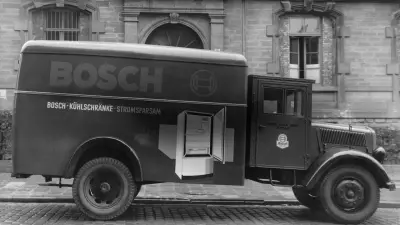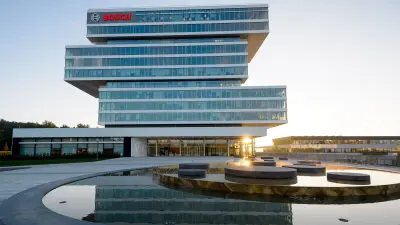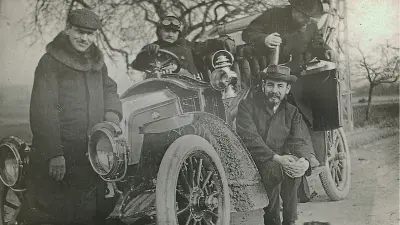More than half a century — Bosch research institutes
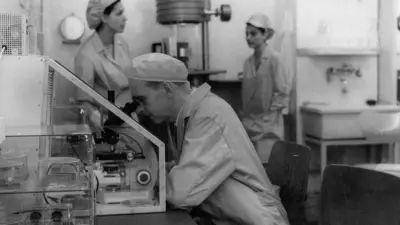
On the cold morning of April 1, 1965, Bosch CEO Hans L. Merkle opened a research center called Forschungsinstitut Berlin (FIB). The invited guests included Karl-Ernst Boeters, one of the institute’s 26 new associates. Clearly amused, Boeters (now 100) relates how Bosch board of management member Gustav Wagner asked whether there was an experienced Bosch associate among those present. Wagner always liked to have at least one around, otherwise things could get lost in translation – not so much because of the Swabian regional dialect, but due to the conventions and rules that are so common in large companies like Bosch but are incomprehensible to outsiders. As a result, an associate from the neighboring Bosch subsidiary ended up taking charge of the secretarial office of the FIB.
Generous spending ... mostly
Officially, the institute was to conduct research into the physics and chemistry of interfaces, thin films, and surfaces. The institute accounted for only a fraction of the around 2,600 associates working in research and development at Bosch at that time. The FIB was conceived as a powerful think tank for basic research, particularly in the field of semiconductor technology.
Unfortunately, the new building was not specifically designed for research, unlike the technical research center constructed later at Gerlingen-Schillerhöhe near Stuttgart.
There, the architects had integrated intermediate levels to enable a flexible supply of water, power, compressed air, and noble gases to the laboratories. In contrast, in terms of equipment, the researchers in Berlin were allowed to procure expensive items worth millions at their own discretion – which constituted a massive leap of faith. However, as eyewitness Karl-Ernst Boeters reported, there was sometimes evidence of more frugality when it came to smaller investments. For example, the accounting department requested that the researchers check again whether they might be able to manage with two voltmeters rather than three...
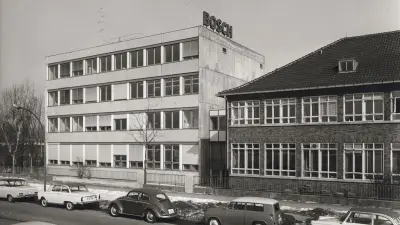
Research for growth
In the first half of the 1960s, it was already obvious that Bosch would continue to need ever an greater research capacity. In addition, research activities in the mid-1960s were scattered across numerous locations. There was a risk that teams at two different sites might end up researching the same topic without even knowing it. Both issues spurred the Bosch management to construct the Technisches Zentrum Forschung (TZF), or technical research center, in the mid-1960s, a facility that was on a par with its pioneering predecessors in the United States in terms of both architecture and technology. It was built on the same site as the new corporate headquarters.
Central and regional

While the TZF was where Bosch pooled its research activities, development centers for product engineering were gradually established at the divisions’ various locations. Then, as now, the aim was to centralize research and decentralize development. International research and technology centers (RTC) were set up in key hubs of global research, such as Palo Alto (today in Sunnyvale) in California’s Silicon Valley. Other such centers are located in Bangalore, Boston, Haifa, Hildesheim, St. Petersburg, Pittsburgh, Shanghai and Singapore.
Over the past decade, growing research outlay caused by the pressure to innovate in a tough competitive market demanded a new overarching research concept. More staff and the increased pressure to produce new innovations meant space was at a premium. Further research facilities were established in Schwieberdingen and Waiblingen, causing a decline in synergy effects within the field of research.
The campus concept
Thomas Kropf, Head of Research and Advance Engineering, put it this way: “The solution was to go back to the drawing board.” The result was the research campus in Renningen, 20 kilometers west of Stuttgart, opened in 2015. It forms the heart of a worldwide research network that includes not only the company’s own research centers, but also partnerships with scientific institutes, including ones at universities across the globe.
“This center of research is an exemplary model of an ideal setting to promote creative thinking and work,” as Kropf explained. “The new working environment created in the research campus is perfect for encouraging personal communication between researchers and interdisciplinary cooperation.” And that’s not all: “It also features green outdoor spaces for thinking through ideas as well as sports hall and gym.” Kropf compares the site to a university campus: “The Renningen research campus provides private workspaces where specialists can work in peace, and shared workspaces, excellently equipped laboratories and even a test track for vehicles that enable employees to discuss their findings and work on innovations together.”
Author: Dietrich Kuhlgatz

